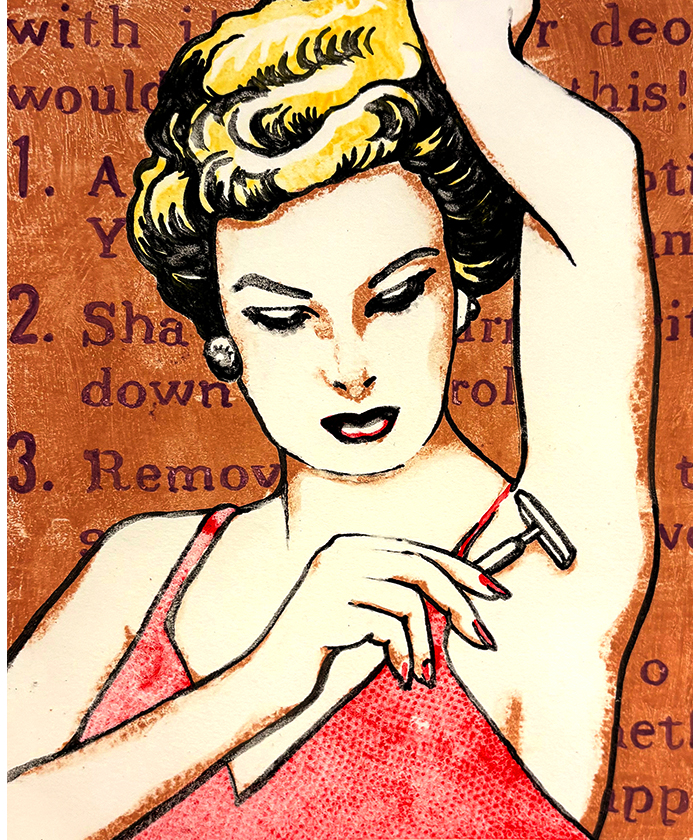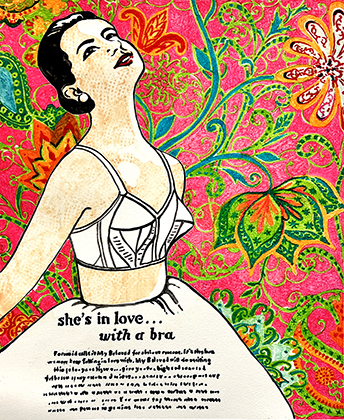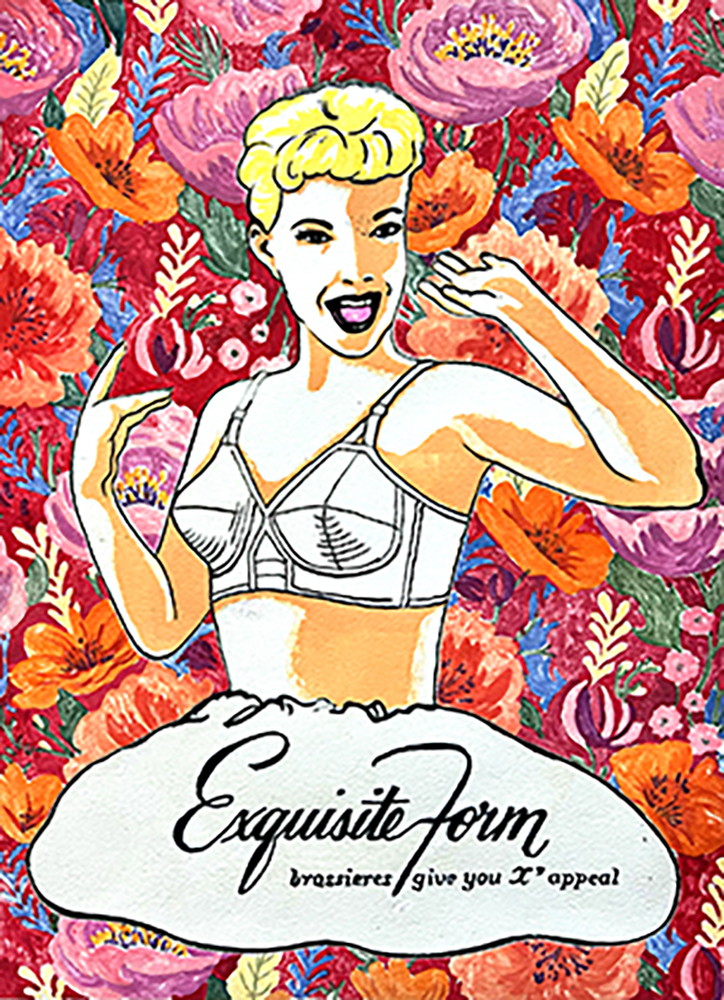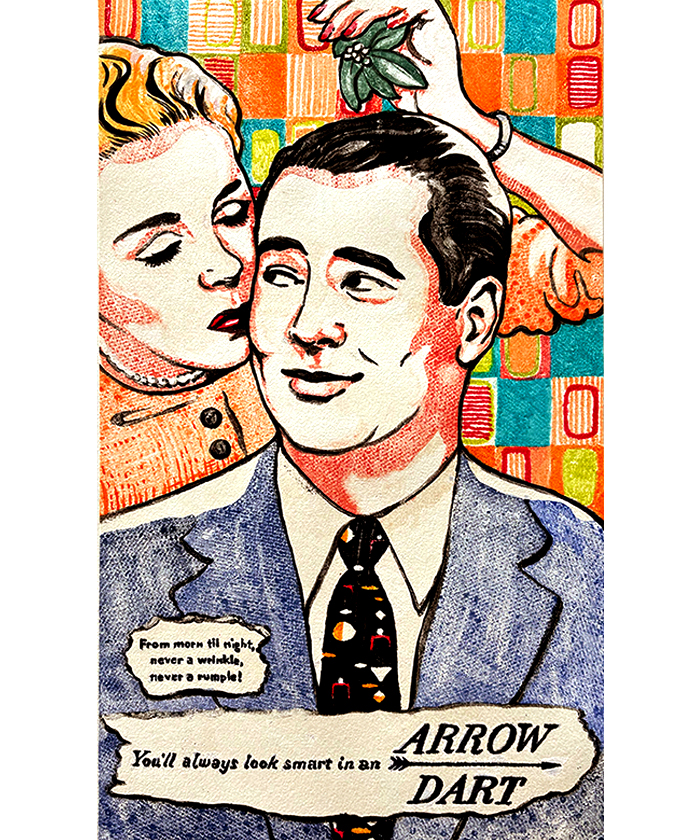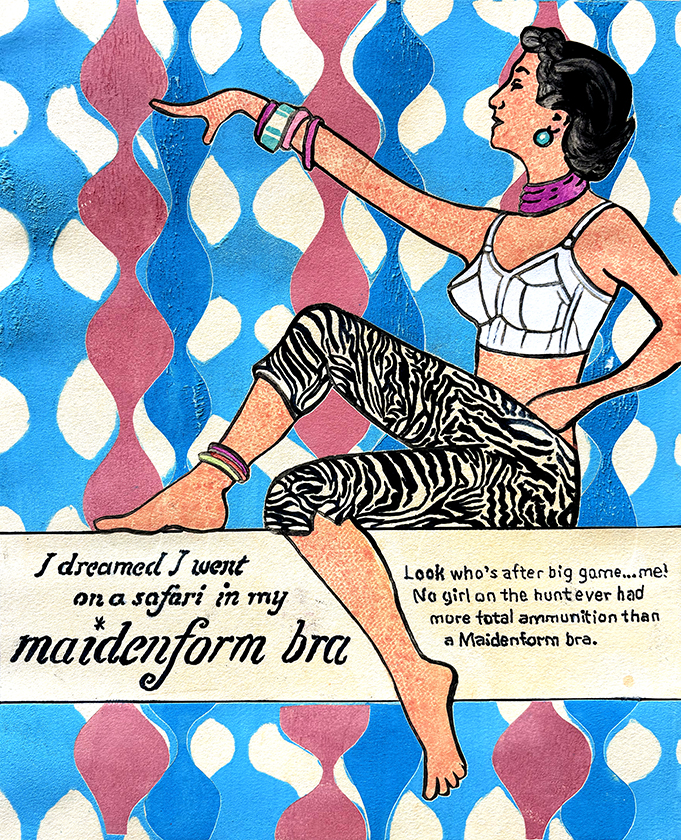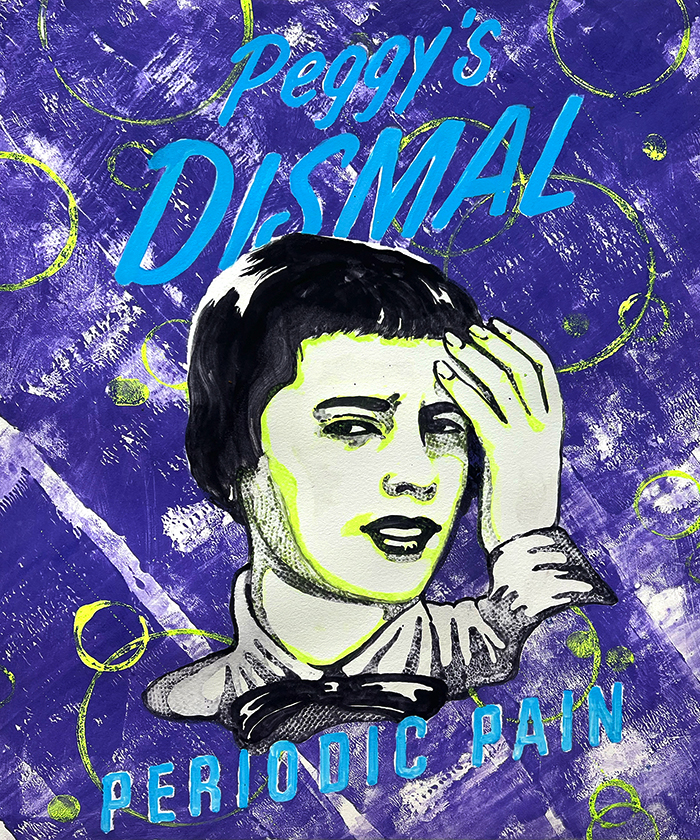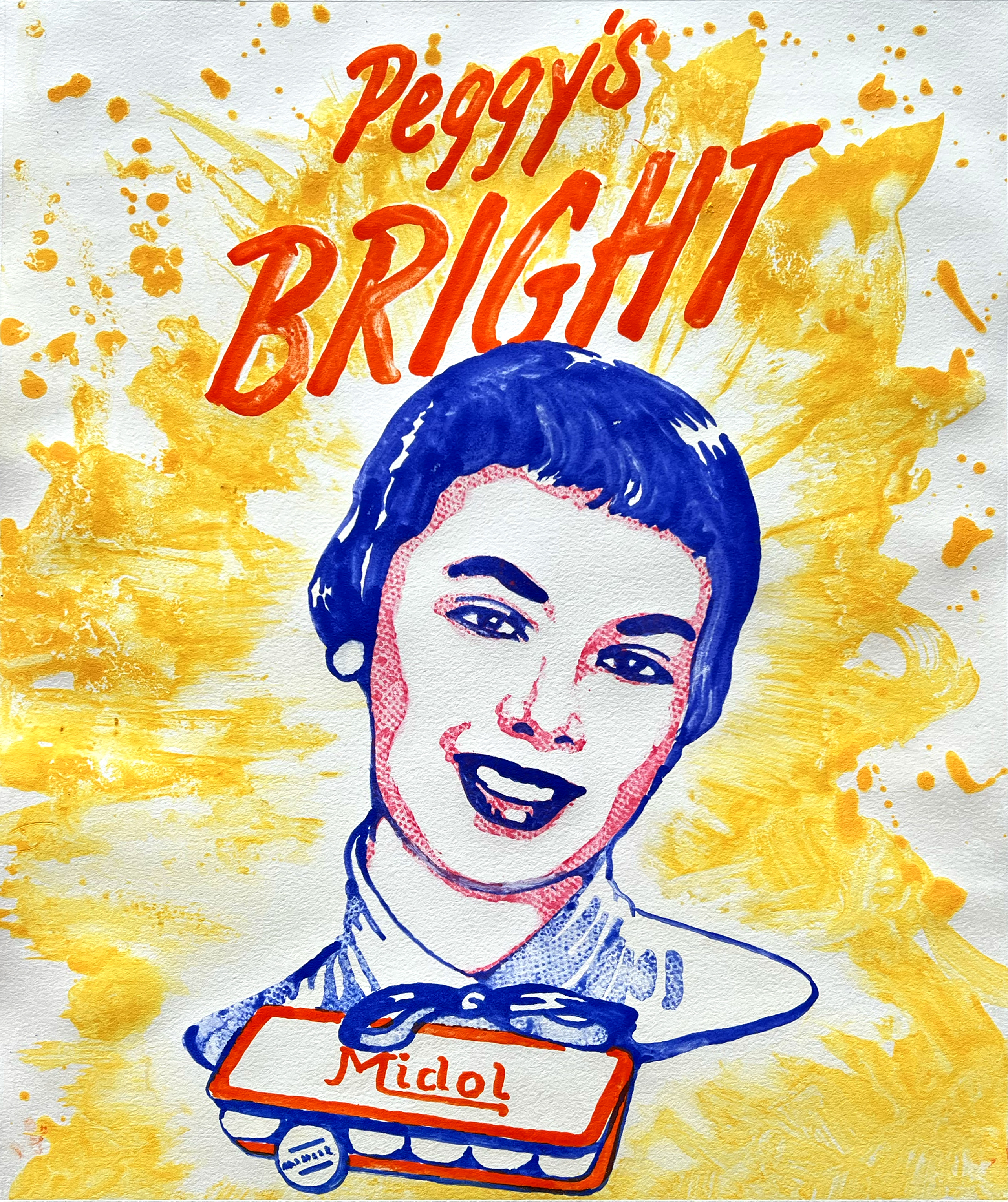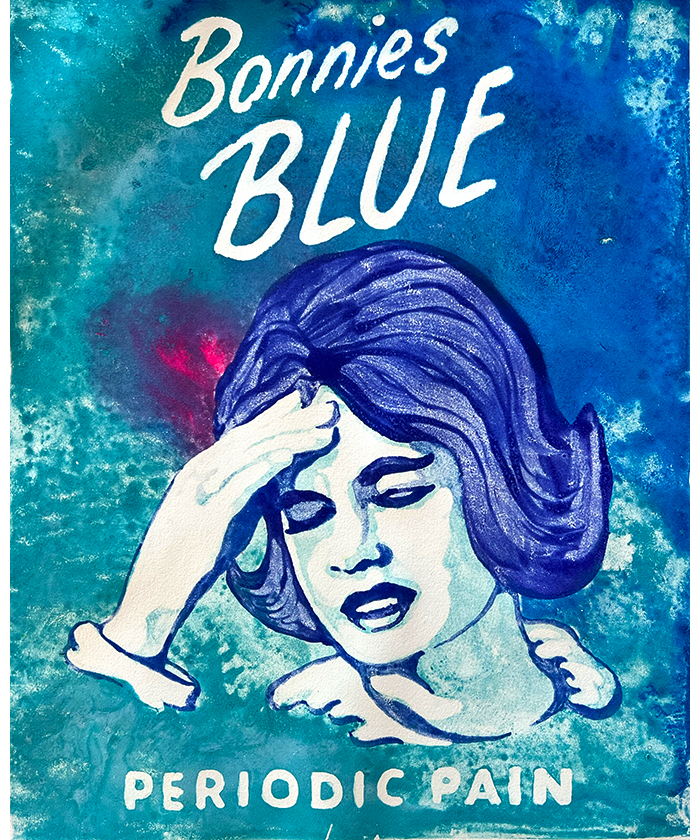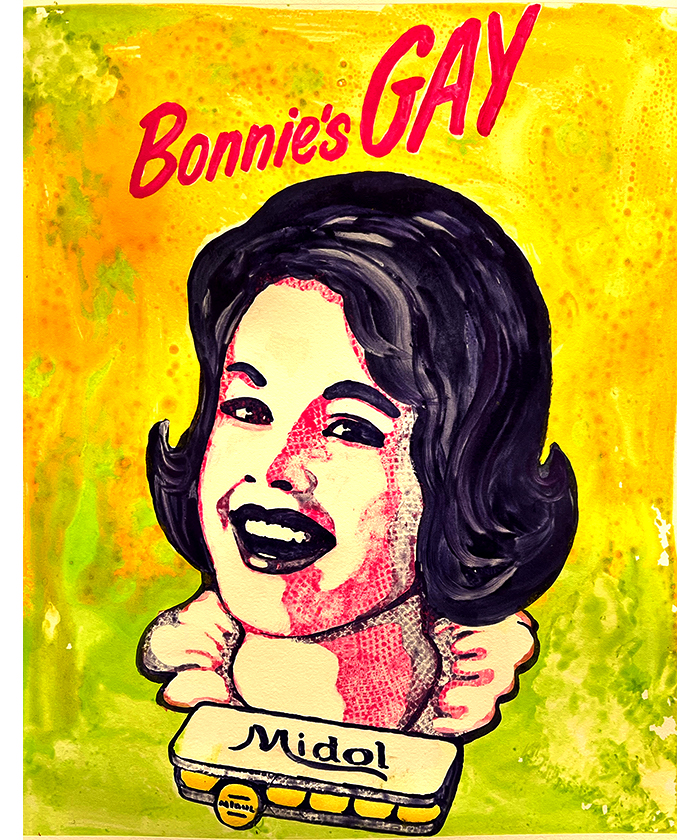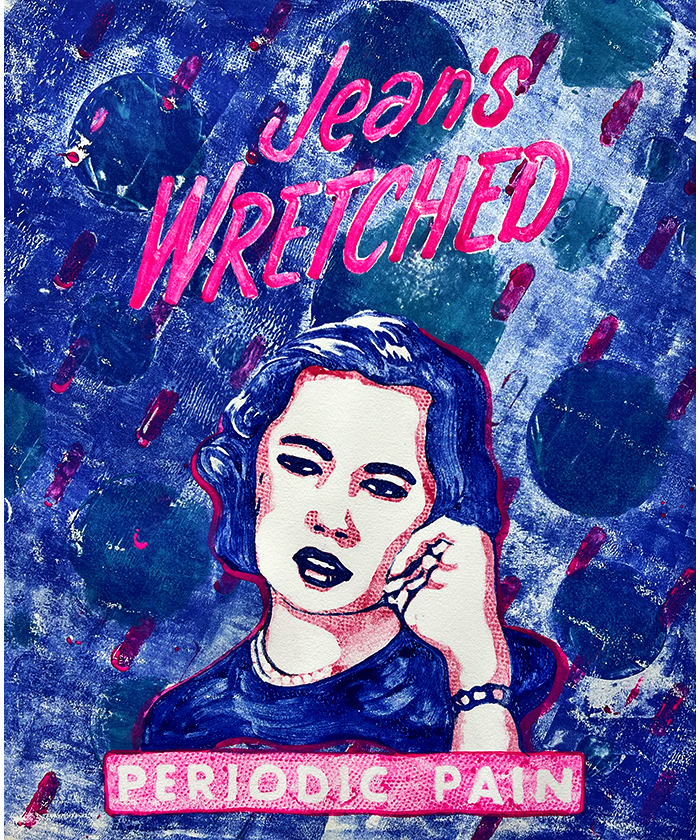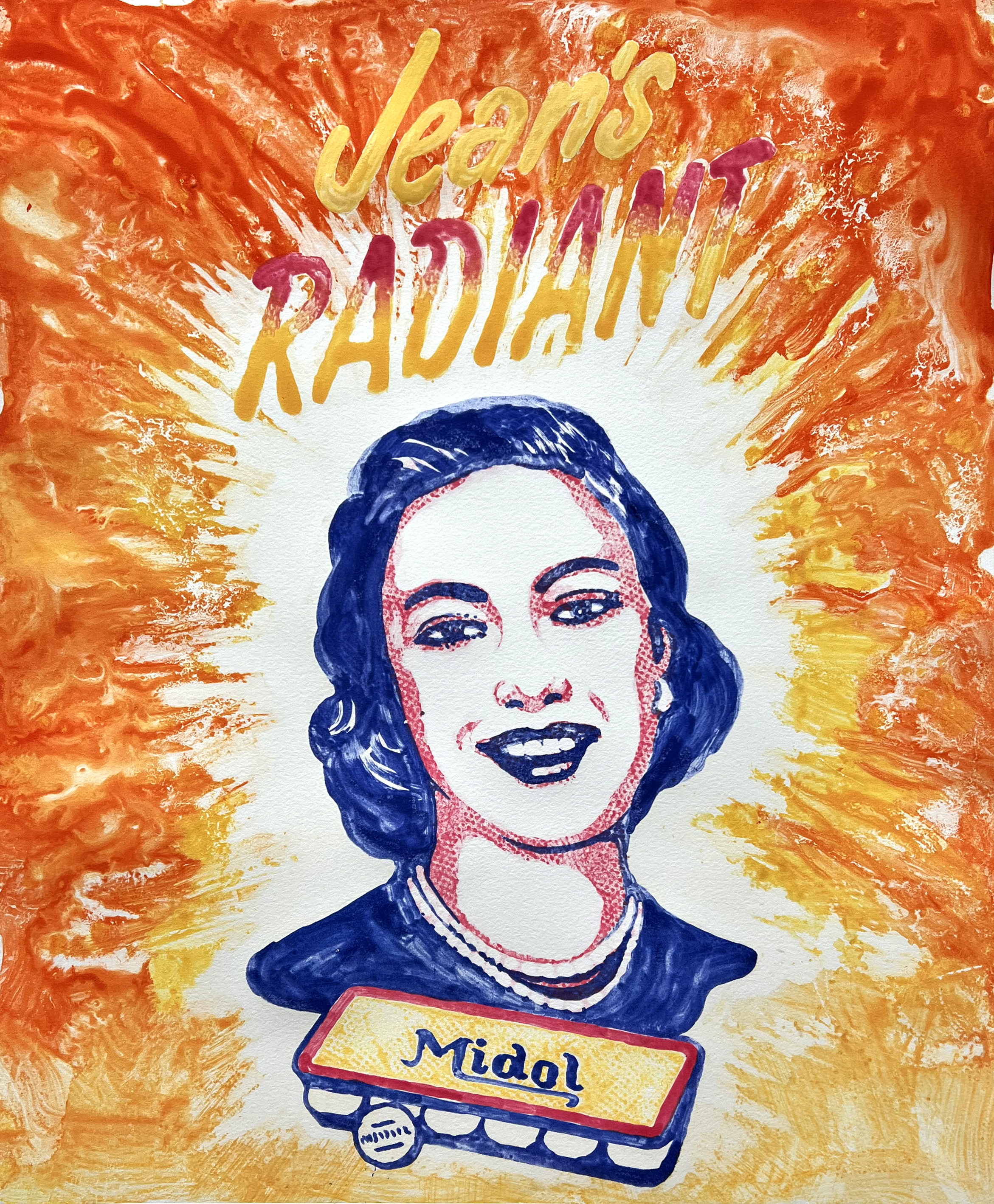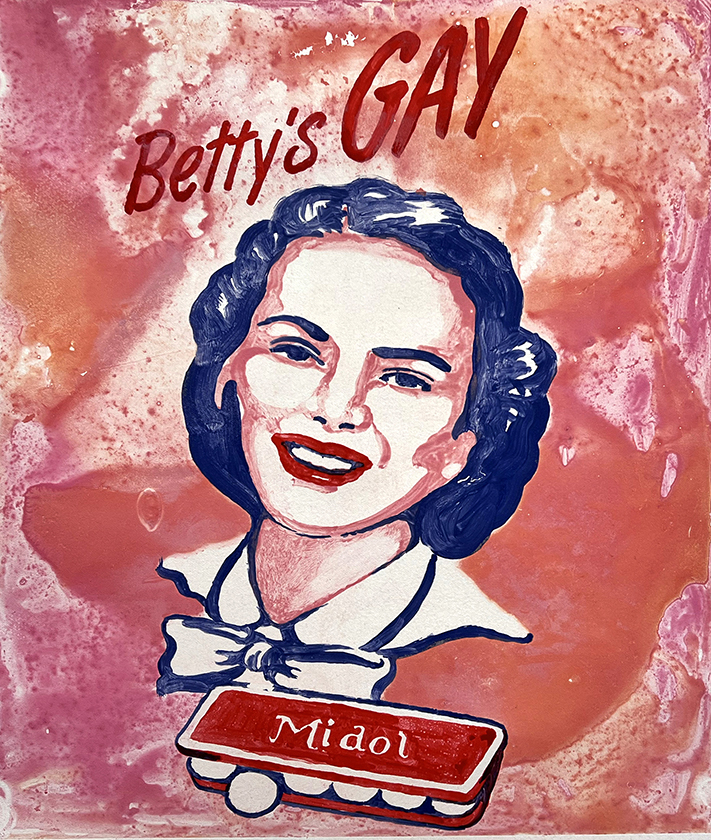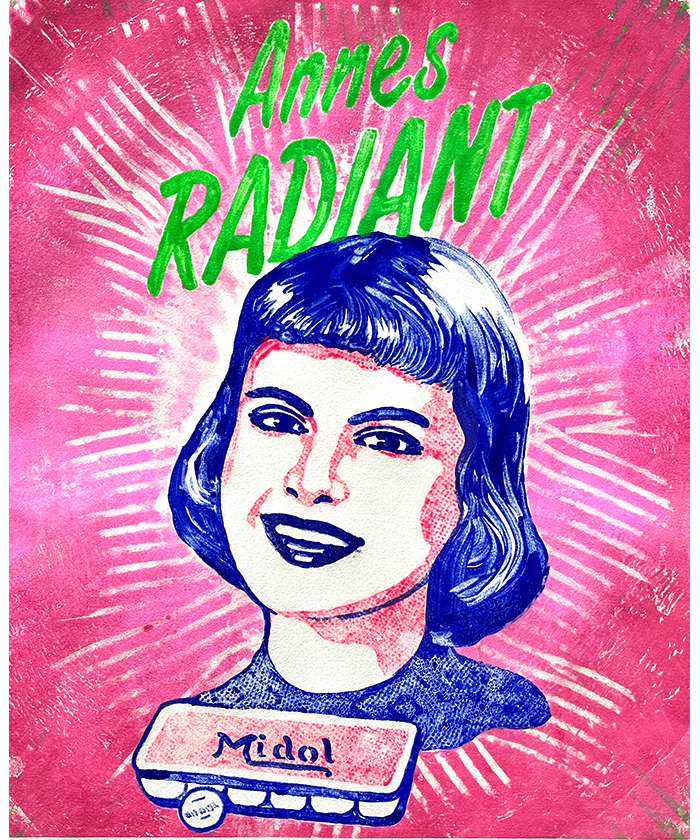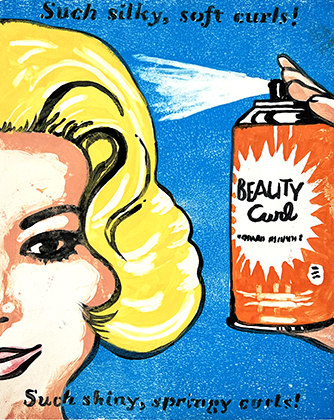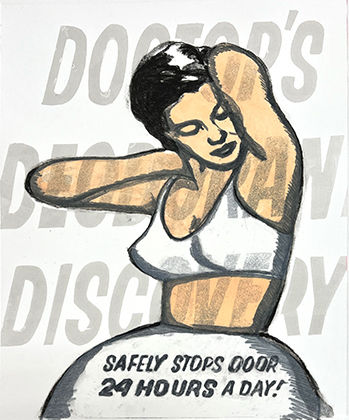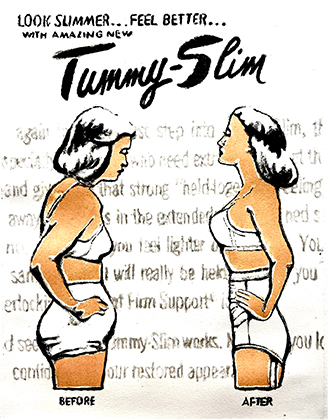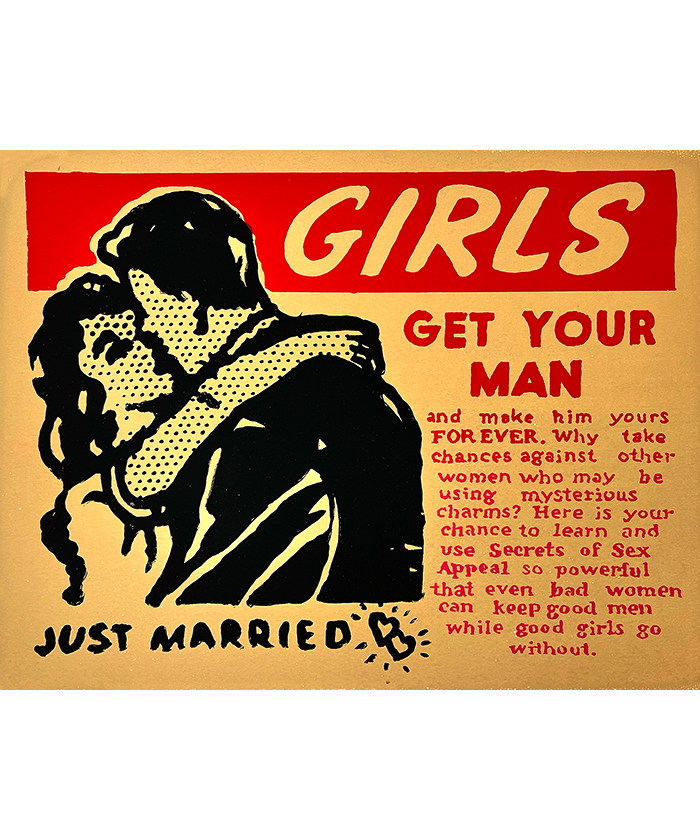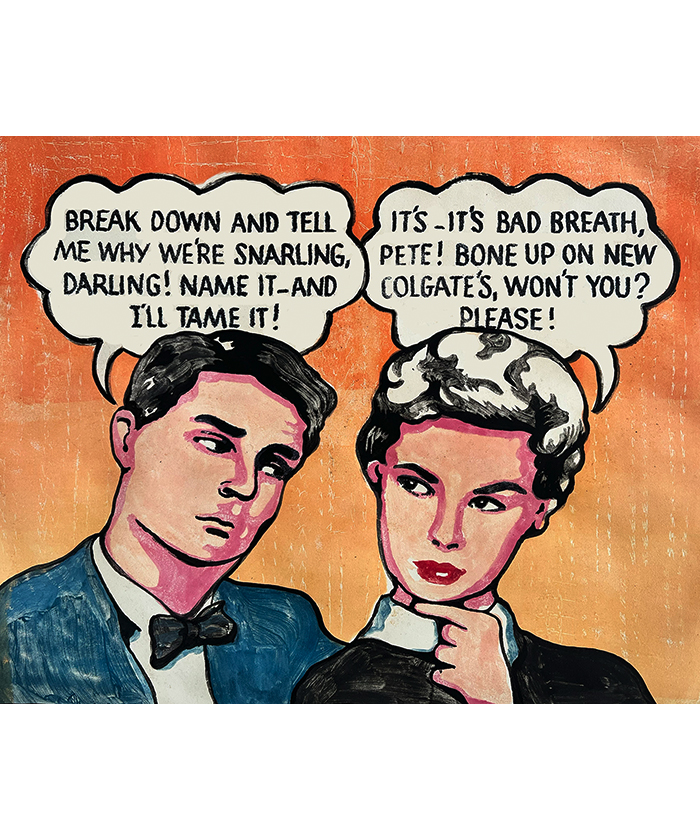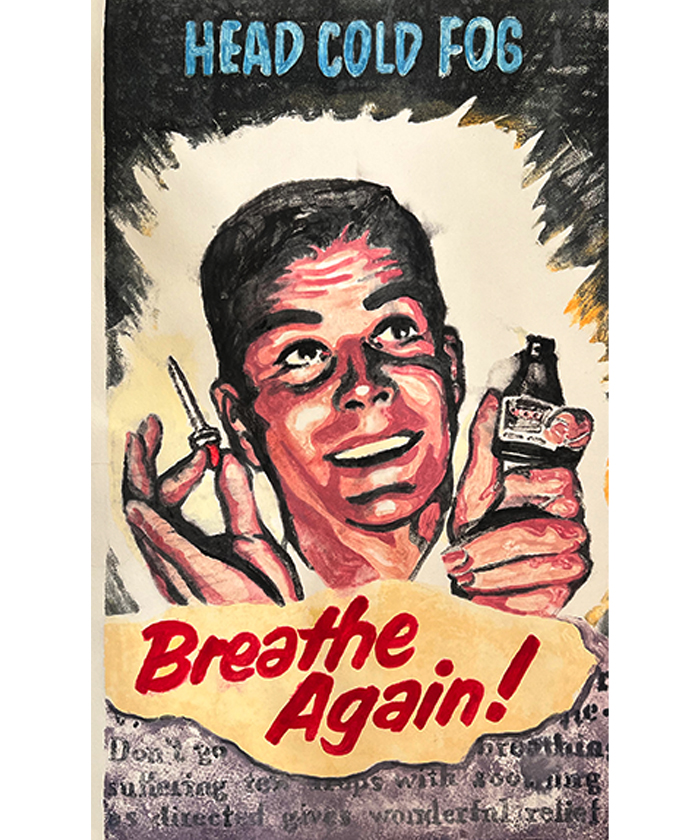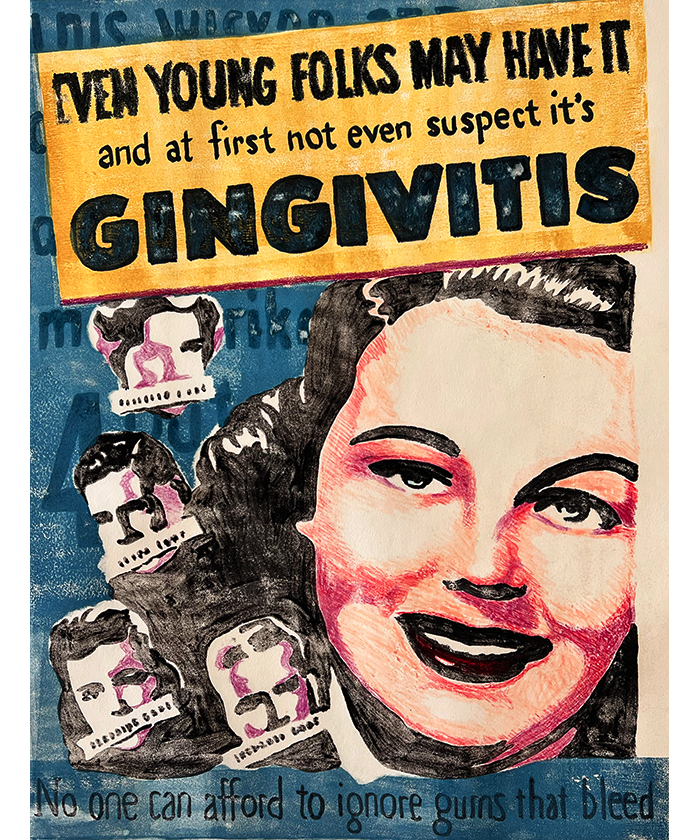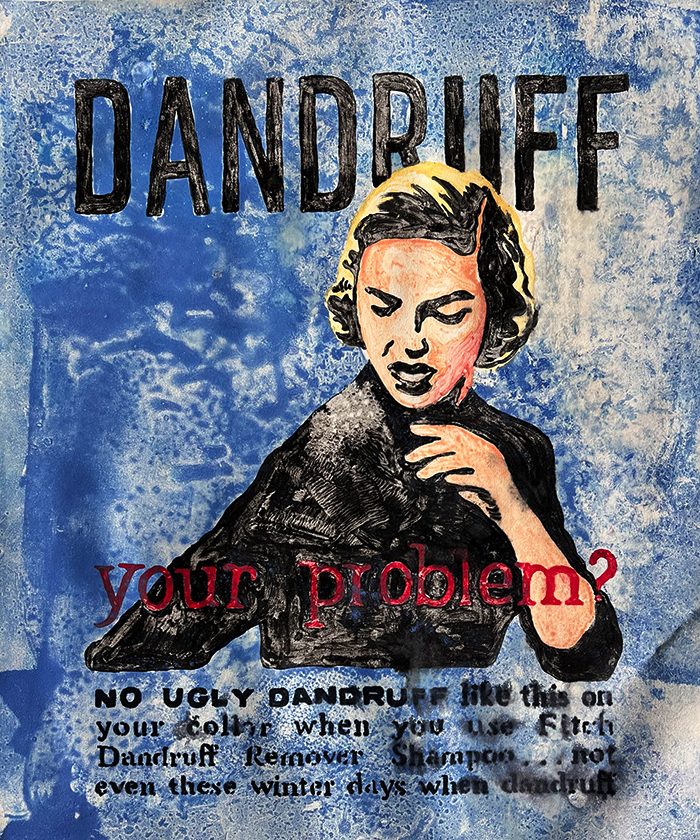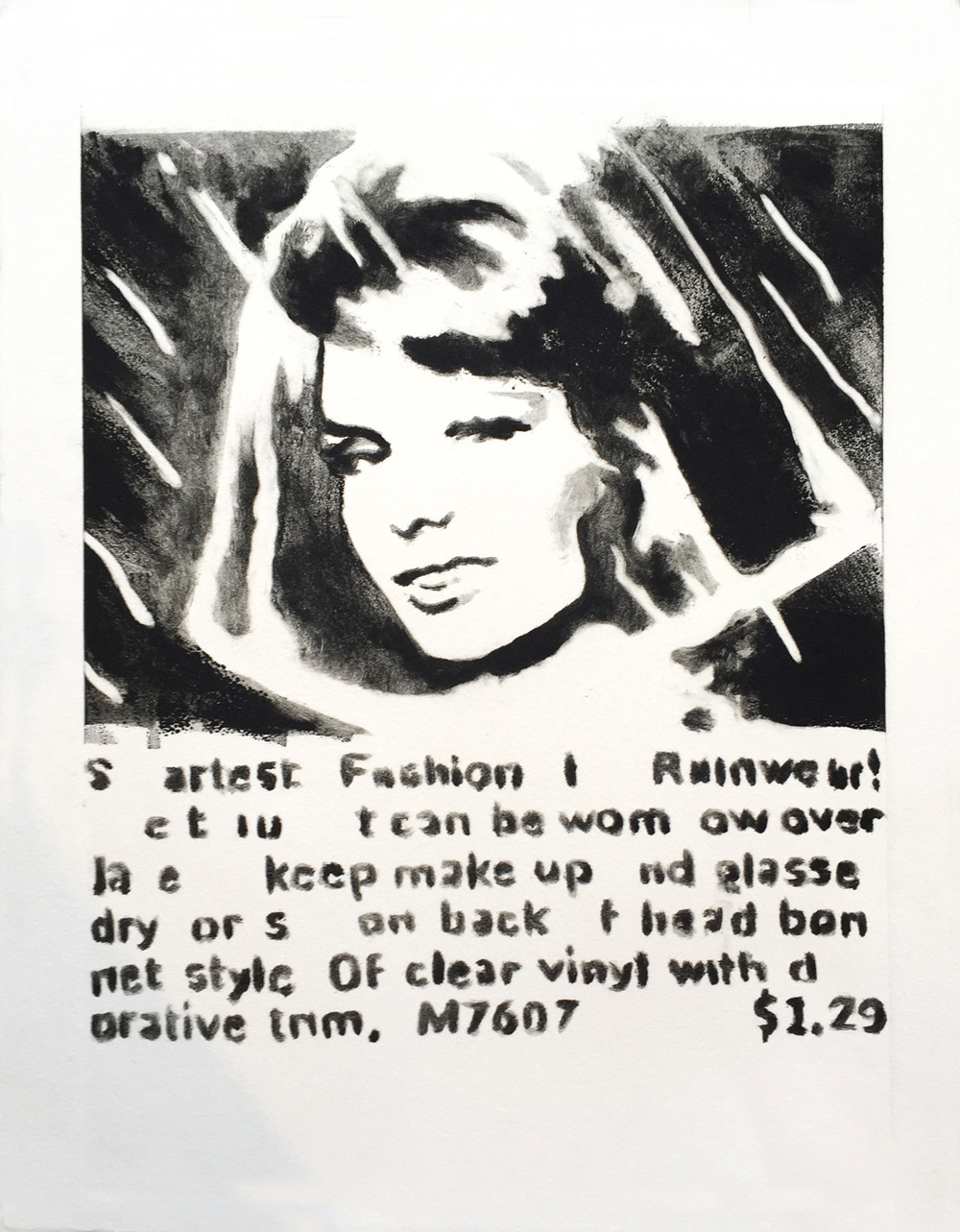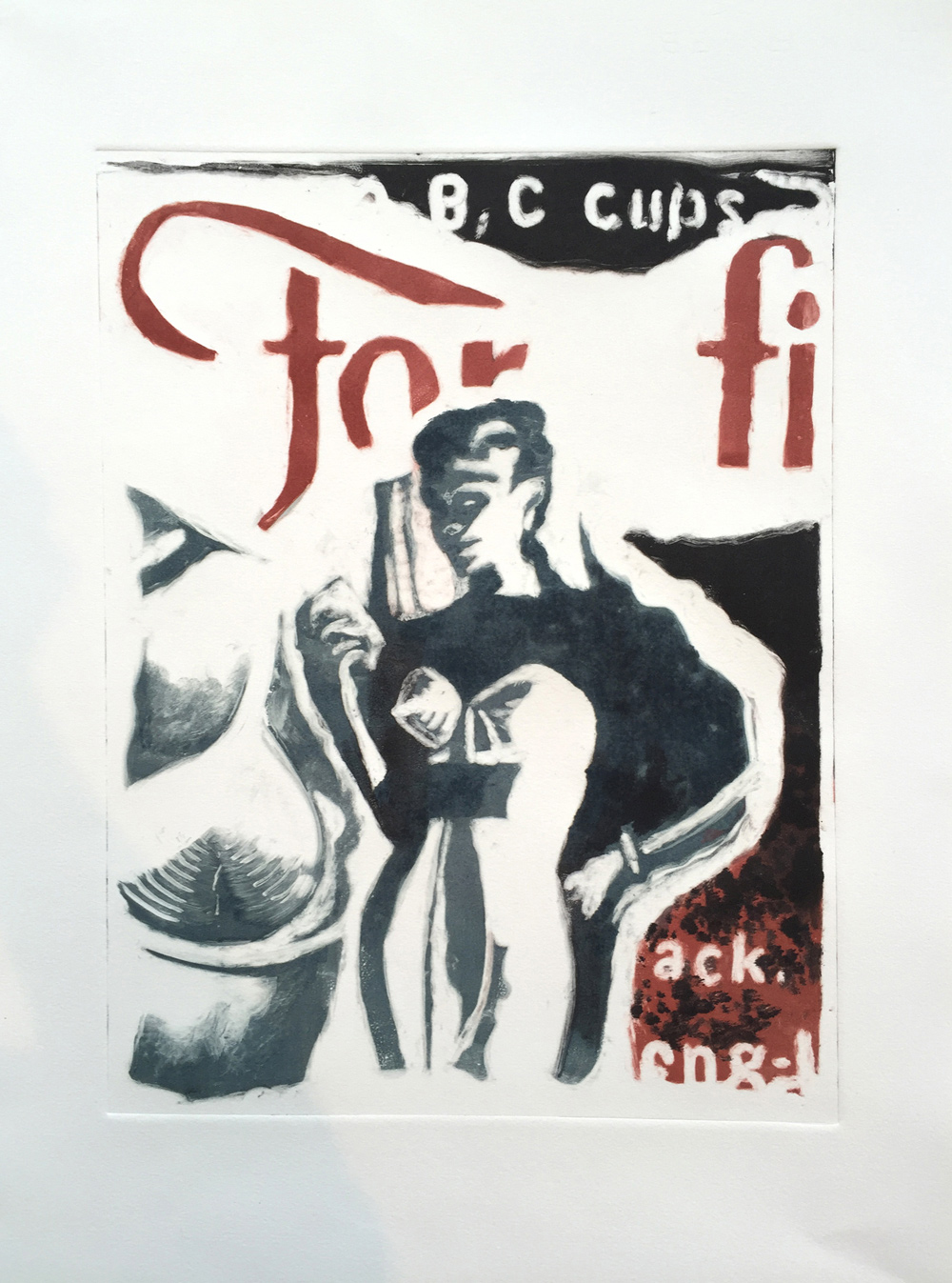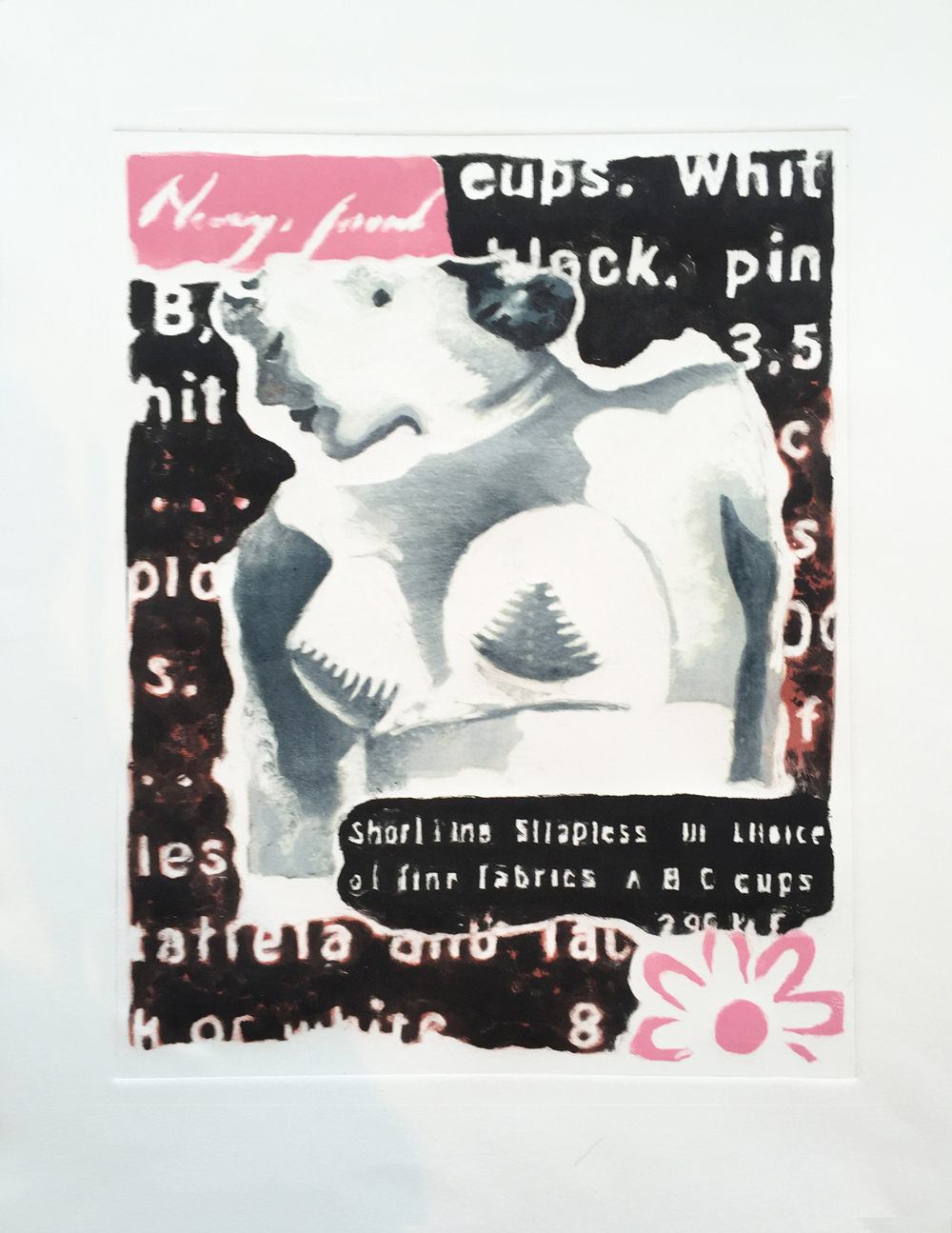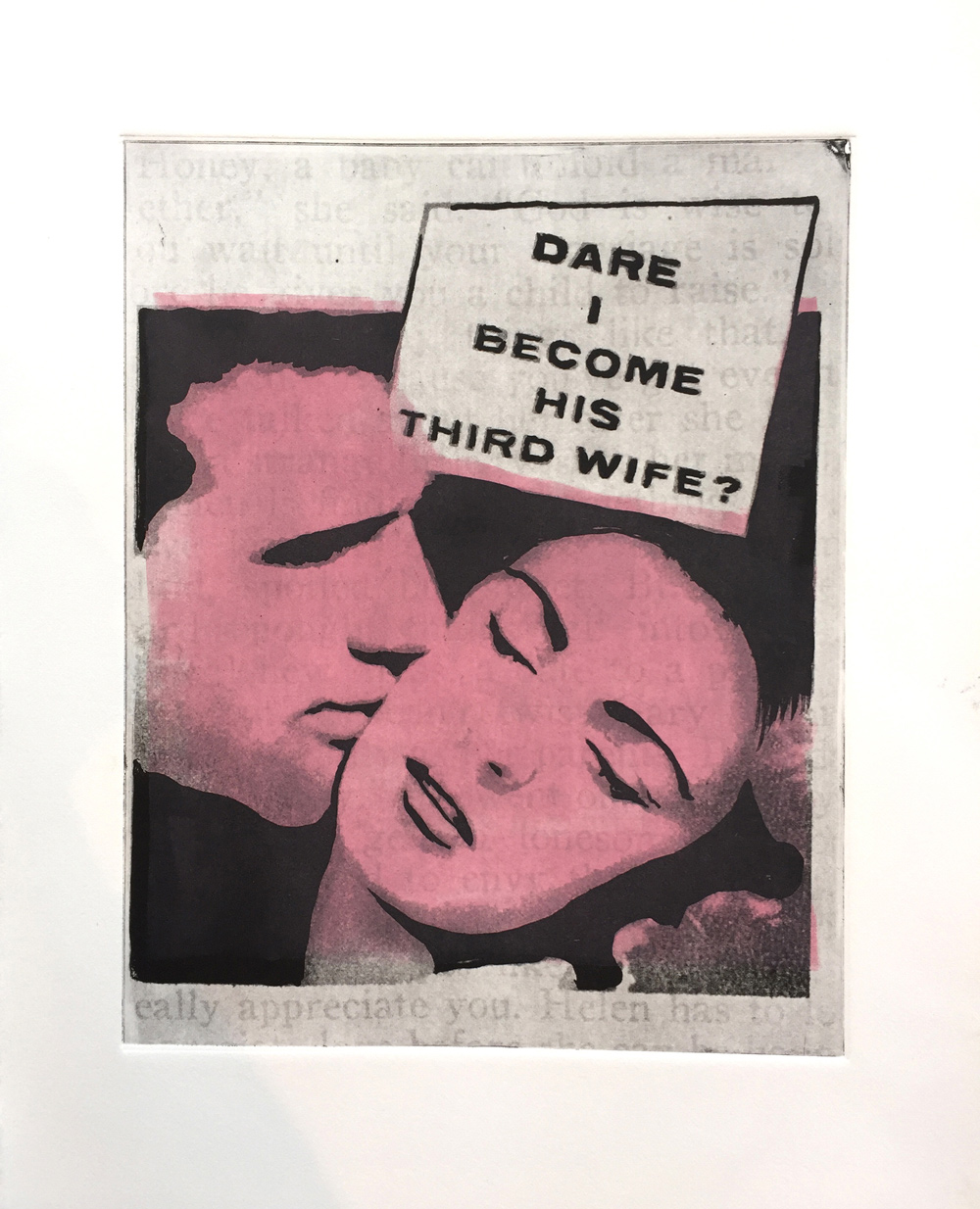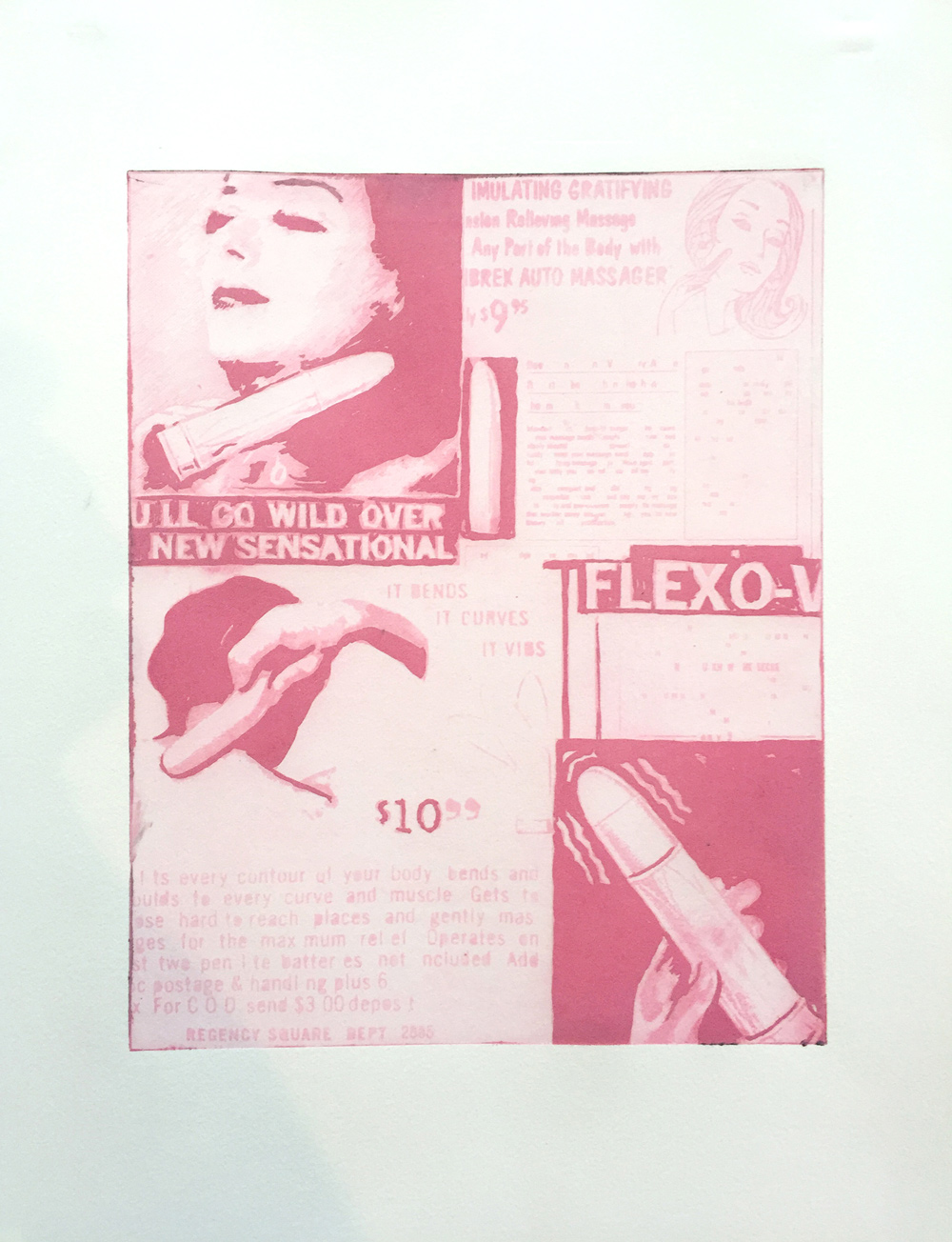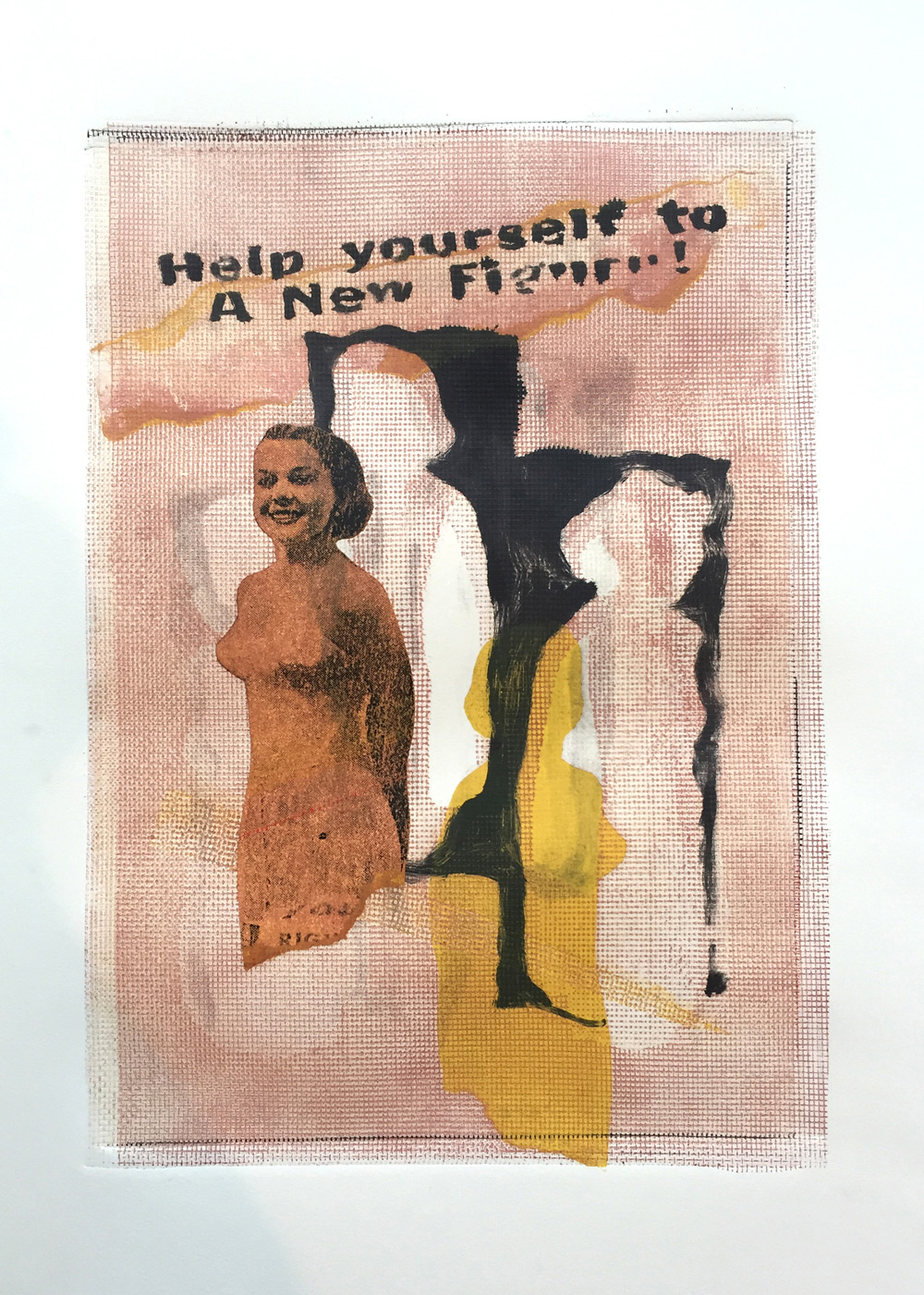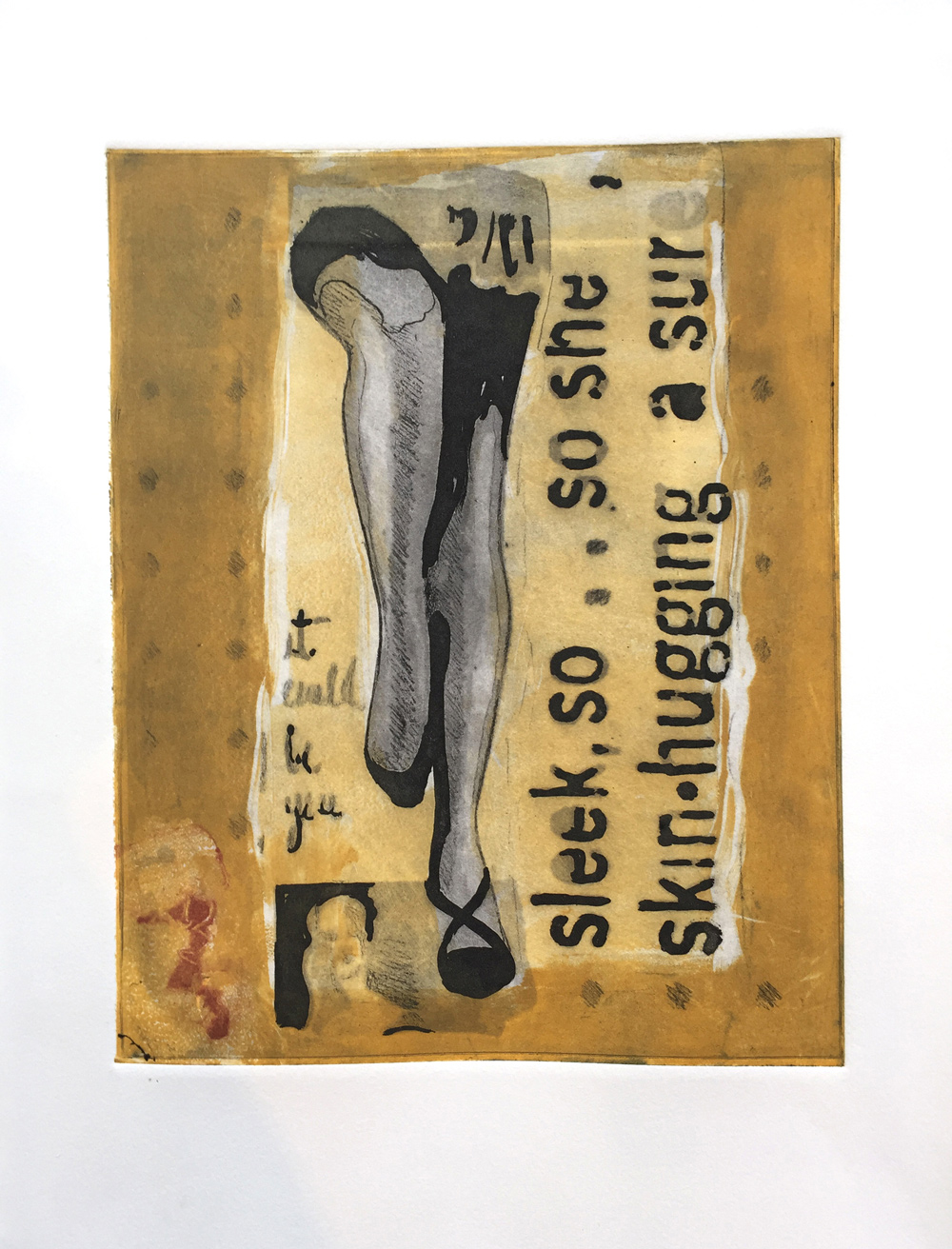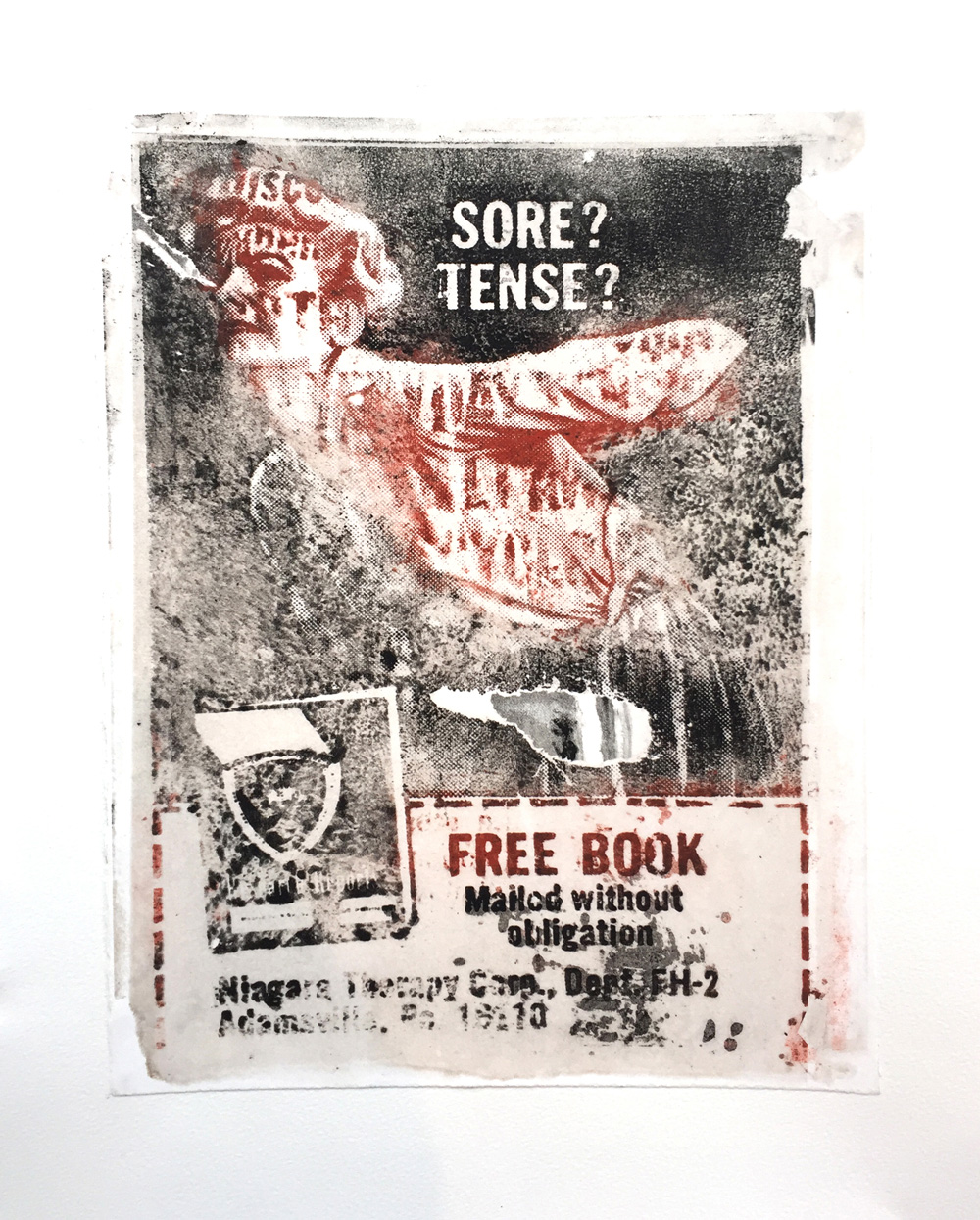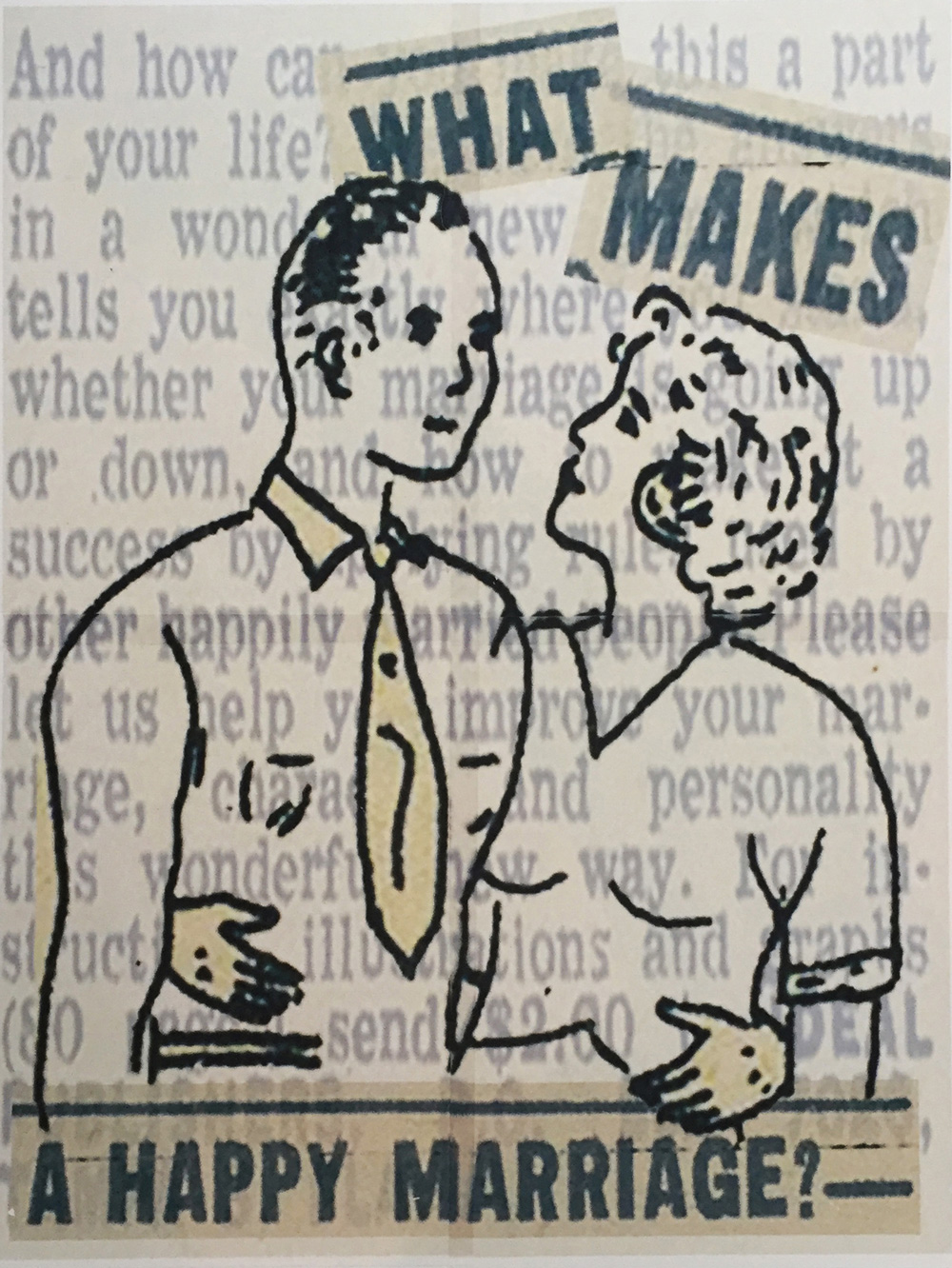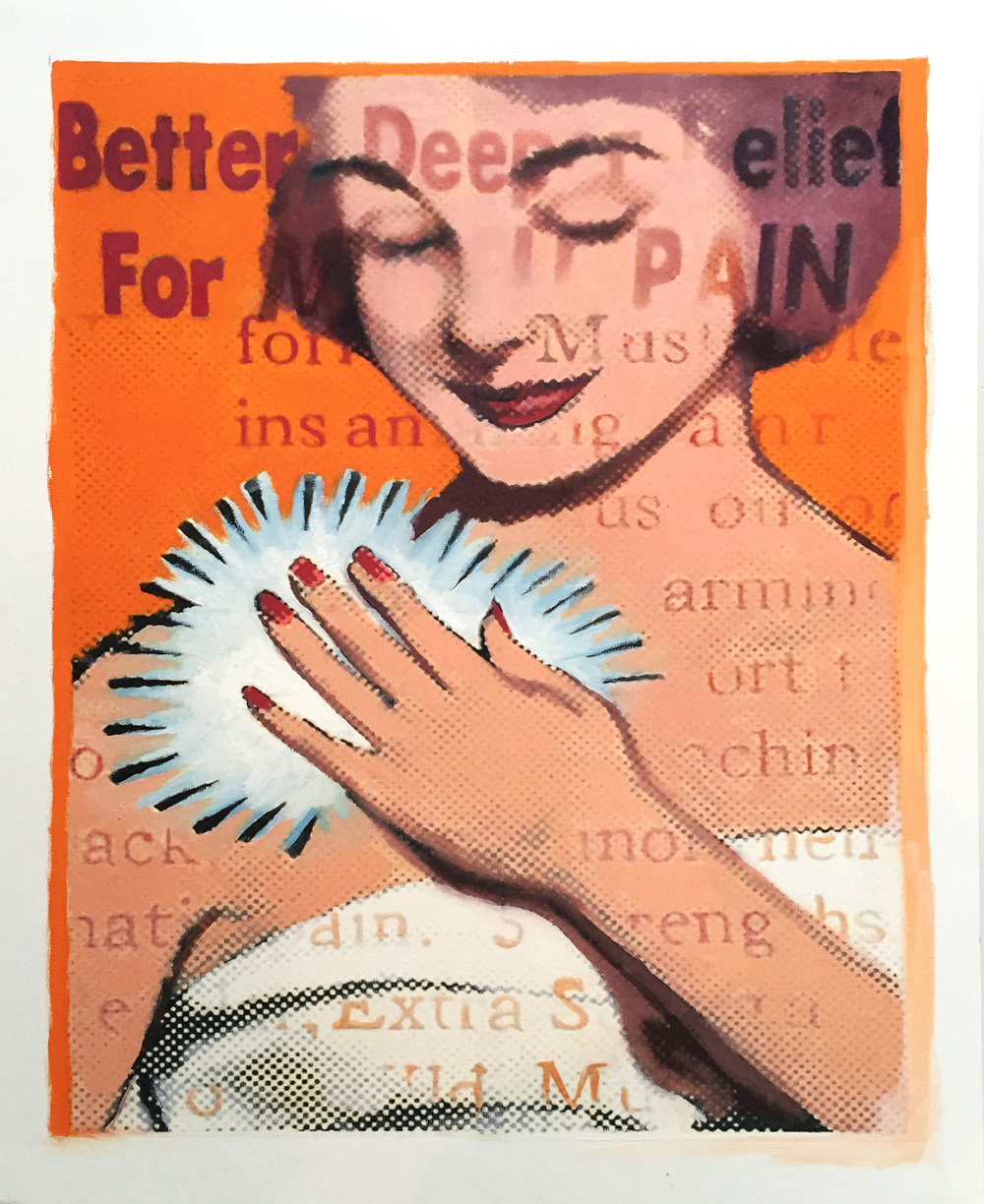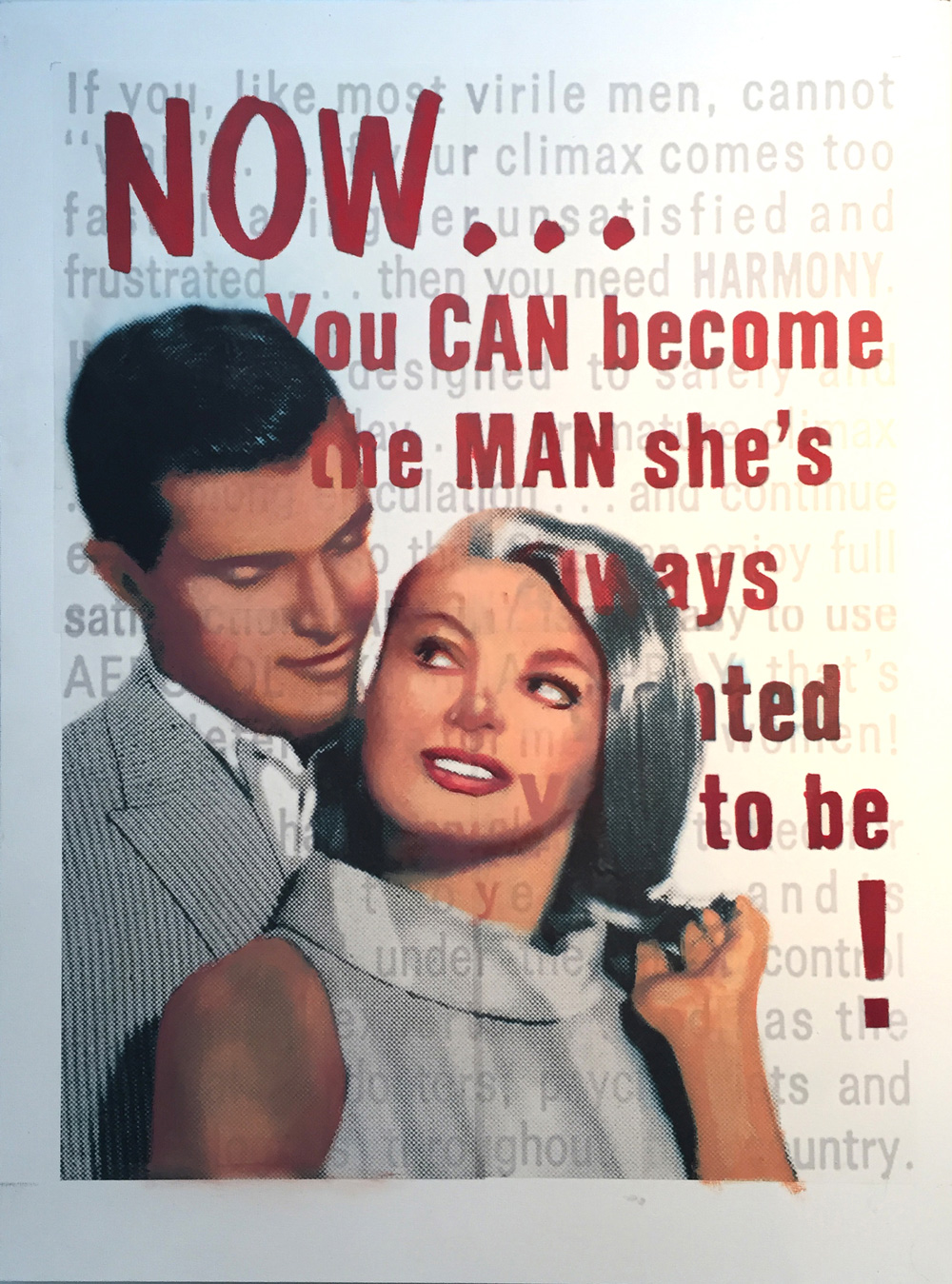“Period Pieces” developed out of my love for old mail order catalog, magazine and newspaper ads from the 1950’s and 60’s. I was initially amused and then fascinated by the language and imagery, and how the focus was on people’s insecurities about their appearance and being “good enough”. But the more I delved into this series, I reconnected with the shame I felt growing up. I had no idea how I was being manipulated by the constant drumbeat of looking good – good enough to attract a cool boyfriend and ultimately get a husband (every woman’s goal at that time).
Let’s face it, you had to be “sexy”! And that meant not having bad breath, BO, being too fat or too skinny, not having pimples, the right color lipstick, having shiny vibrant hair and gleaming white teeth. If you used the right soap, the right deodorant, the right lipstick, wore the right bra, the right girdle and the right panty hose – you could attract the man of your dreams.
For women, the goal was to put the right meal on the table when your husband came home from work, and look good doing it! Everything in the messaging was about “getting and holding your man”.
For men, there was also plenty of pressure to look good – obviously for the same reasons: sex appeal! No one wants to be with the guy with dandruff or a skinny nobody, when you can be with a “he-man”!
ChatGPT defines “period piece” as: “a work of art – such as a film, television show, novel, or play – that is set in a specific historical period and strives to accurately depict the customs, fashion, social norms, and events of that time. The goal of a period piece is often to immerse the audience in the historical context, providing a sense of authenticity and bringing the past to life.”
One of the things I’ve been struck by in choosing images for these pieces is the copy that accompanies the visuals. Now, as I read these ads I’m struck by the patriarchal and misogynistic mindset that ultimately birthed the feminist revolution.
I started this series of monotypes in 2012 and have experimented with numerous printmaking techniques including etching, solar plate, pronto, and silk screen. Early on all the prints were created with traditional printing presses. In the last few years I’ve explored making “hand-pulled” prints at home using water-based inks. My process begins with scanning the original ad, then distilling images and salient copy, then creating a collage, either by hand or in Photoshop. The collage then becomes the basis for the image used for the final print.
I have found it revealing to study the culture of advertising from that time period. The messaging that might appear to us now as humorous or at times shocking, was full of “shaming”. This was the world that so many of us from the “baby boom” generation grew up in. And then I wonder – has anything really changed? Perhaps in sixty or seventy years, people will look back at the advertising from our current time period and see the same thing?

